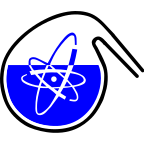Speaker
Description
The extraction system that supposed to be used for extraction of radionuclides must have suitable extraction and hydrodynamic characteristics, as well as to be explosive- and fire-safe in operation. The main reason of the worsening the circulating extractant quality is the formation and accumulation of various organic compounds under irradiation. The main products of radiolytic degradation in the extraction system based on tributyl phosphate in a hydrocarbon diluent are: monobutylphosphoric, dibutylphosphoric and phosphoric acids, butanol, carbonyl compounds, nitrocompounds and nitrates, carboxylic acids and esters, various saturated and unsaturated hydrocarbons. The in-cycle regeneration stage is used to remove impurities from the system. At this stage the extractant is washed with solutions of basics or alkaline metal carbonates. However, if a sufficient amount of higher carboxylic acids is accumulated in the system, then extractant washing leads to the formation of their salts, which are strong emulsifiers.
The objective of this study is to evaluate the possibility of application of salts of organic bases (guanidin carbonate and methylamine carbonate) and sodium bicarbonate at the stage of in-cycle regeneration of the degraded extractant. The 30% TBP solutions in Isopar-M isoparaffin diluent (fraction of branched hydrocarbons up to 14 carbon atoms) were used as extraction systems. Irradiation of the organic solutions preliminarily saturated with 3 mol/L nitric acid was performed up to doses of 250, 500 and 750 kGy using a linear accelerator UELV-10-10-S70 with 8 MeV energy. The regeneration step was carried out in a separatory funnel with a glass stirrer by two contacts (each step for 10 minutes) at equal volumes of the organic and aqueous phases. Aqueous solutions of 0.5 mol/L NaHCO3, 1 mol/L guanidine carbonate or 1 mol/L methylamine carbonate were used as regenerating solutions. The radiolysis products were analyzed by Fourier transform IR spectroscopy.

